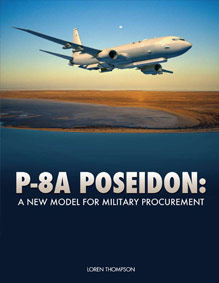Research Study
Executive Summary
The Navy is developing a military version of the widely used Boeing 737 airliner to serve as its next-generation maritime patrol aircraft. Designated the P-8A Poseidon, the land-based jet will perform anti-submarine, anti-surface and intelligence-gathering missions for the joint force once it becomes operational in 2013.
Poseidon will replace the propeller-driven P-3Orion, which is rapidly approaching the end of its service life. The new plane will be considerably more capable than its Cold War predecessor, enabling the Navy to cover more ocean faster with a smaller fleet of aircraft. Poseidon’s onboard combat capabilities are the most advanced in the world, combining state-of-the-art sensing with precision weapons and comprehensive connectivity to the rest of the joint force.
The Poseidon program has made steady progress through development and testing into low-rate production. The plane is being built using an innovative acquisition strategy that facilitates continuous upgrades to capabilities as threats evolve. Because Poseidon is based on the most popular commercial airframe-engine combination in the world, it is easier to operate and maintain around the world than a purely military plane would be.
In 2009, the government of India committed to buying eight of the planes to protect its 5,000-mile coastline and littoral waters. Other countries likely to consider purchases include Australia, Canada, Germany, Italy, Japan, New Zealand, Norway, Spain and South Korea. Variants of Poseidon may also be adapted to other military missions by the United States, since the aircraft is intrinsically versatile and is well-suited to many overland missions beyond its primary maritime role.
This report was written by Dr. Loren Thompson of the Lexington Institute staff as part of the institute’s continuing inquiry into technology and industrial trends bearing upon national security.
Click here to download the full report as pdf.
Find Archived Articles:
